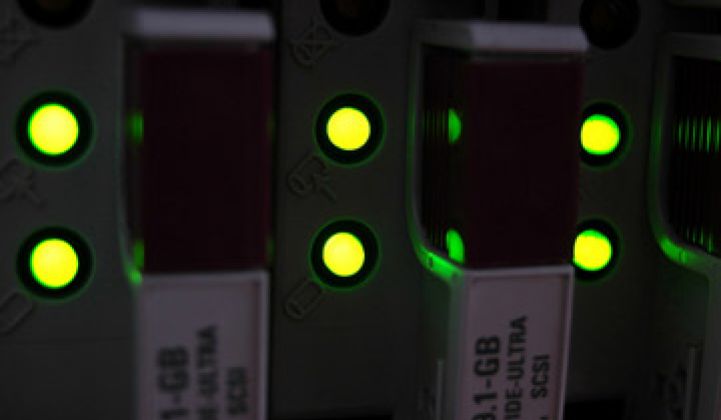A watt of power plugged into a server ultimately turns into a watt of waste heat.
That neat equation is at the basis of the EnviroCube, a novel device from TrendPoint designed to better manage air conditioning in datacenters. It works like this: TrendPoint monitors the power going into various datacenter equipment and the air conditioning system. The data allows it to determine how much heat should be produced and where it will come out. It then cross-checks it against data on the ambient environment to determine cooling efficiency or gaps in a cooling strategy. Most datacenters overcool their servers by a significant margin to make sure the hottest ones farthest away from the vents get the minimal amount of cold air needed, said CEO Bob Hunter.
"A server is a toaster," noted Hunter. "MIPS (millions of instructions per second) per watt keeps going down but total power consumption keeps going up."
The system also anticipates mechanical breakdowns and failures, trimming downtime.
Although some companies have begun to erect datacenters in cold environments to take advantage of chilly winds -- Yahoo built one near Lake Erie, for instance -- you don't have to move to Buffalo to get better cooling. In 2008, EDS (now part of HP) reconfigured a datacenter in the United Kingdom. One change involved putting AC vents right below each server rack. It cut cooling energy by 30 percent.
Schneider Electric and Computer Associates rebrands and resells TrendPoint's technology, but the company hopes to market equipment under its own brand more in the future.
Elsewhere:
--Facebook has installed the lighting and building management technology from Redwood Systems in its 300,000-square-foot datacenter in Prineville, Oregon. Redwood effectively links LED lights, motion sensors, temperature sensors and other devices with a networking protocol that's similar to power-over-Ethernet. Because lights are evenly spaced out on ceilings, the systems give a somewhat granular view of what's going on inside a building and thus gives managers the opportunity to turn off lights automatically and remotely.
Johnson Controls, one of the leaders in building management, put Redwood's tech in its headquarters. One retailer is looking at it as a way to monitor traffic in stores and at checkout counters, CMO Sam Klepper told us recently. Redwood is a hot topic in Silicon Valley these days. The downside: many people say the technology is somewhat expensive. Klepper says that buyers can achieve a payback in two to five years, but facilities managers (often notorious cheapskates) often claim they want payback on anything new in one year. Leasing and "as a service" business models will likely come to the rescue here.
Under the Open Compute Project, Facebook has designed a server that consumes 38 percent less power than the off-the-shelf models the company previously used, thanks to components like the customized power supply and novel internal fans.
The servers are then housed in datacenters that rely heavily on DC power to cut down on the number of conversions and transformations as a means of saving power. The server plans and datacenter design are both available under an open source license.
--Finally, PowerAssure, one of the better-known specialists in energy management software for datacenters, says it has upgraded its technology to give a finer-grained view of how power gets consumed. PAR4 will provide details on CPU consumption, idle power consumption, etc. In other words, you get a more complete view of power consumption. Early metrics have only tackled single slices of performance, like power consumption in idle mode.
NASA uses Power Assure's services and so has Facebook. The company counts IBM, Cisco, VMWare, Dell and Intel as partners.
Technologically speaking, Power Assure's services can be viewed as something that helps virtualization. Virtualization allows IT managers to lump applications onto a single piece of hardware to conserve assets and power. Nonetheless, server utilization typically stops at the 10 percent to 20 percent level to accommodate potential spikes in demand.
"Twitter has one of the most aggressive spike curves," CTO Clemens Pfeiffer told us last year. "You have to carry a large buffer."



